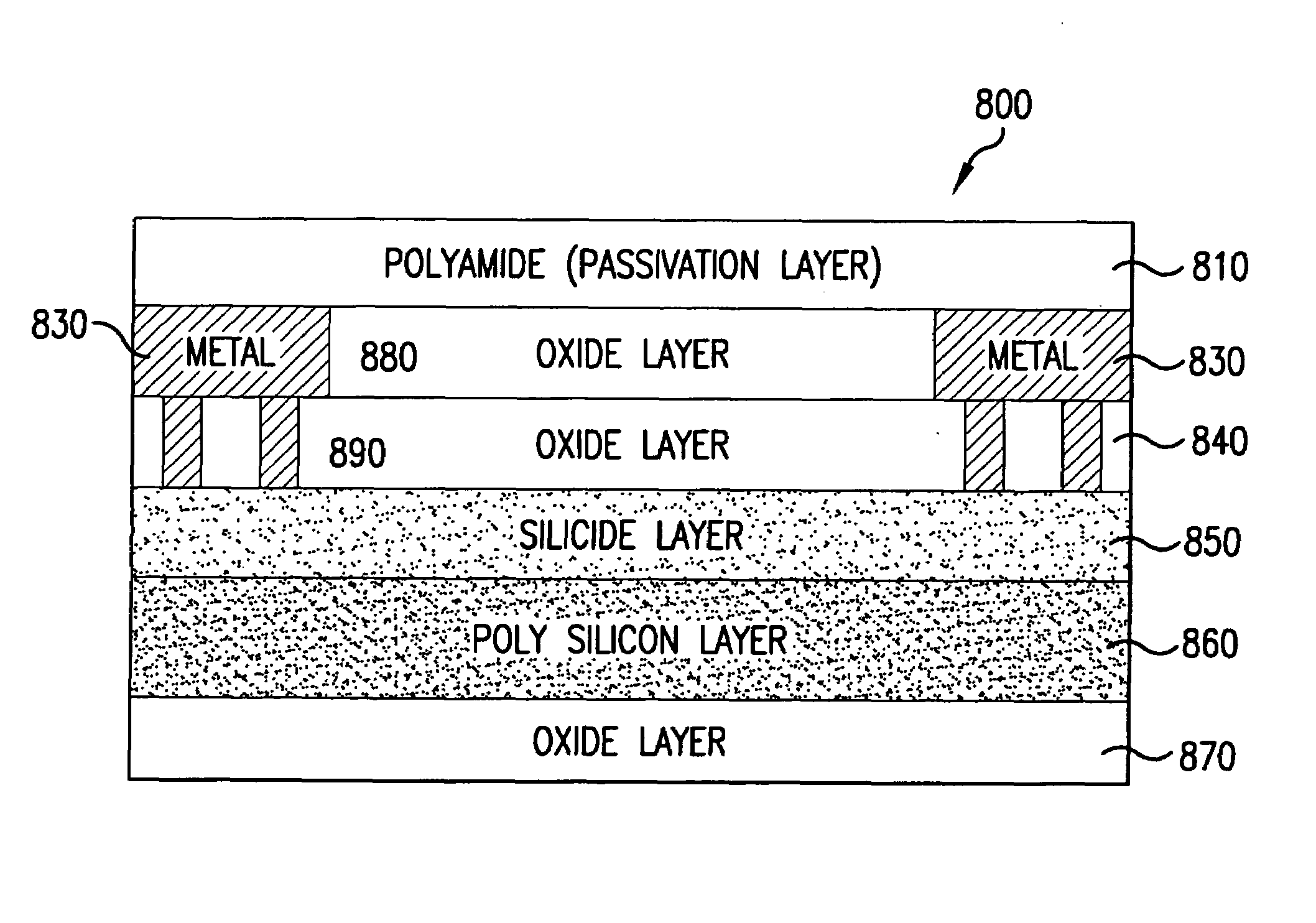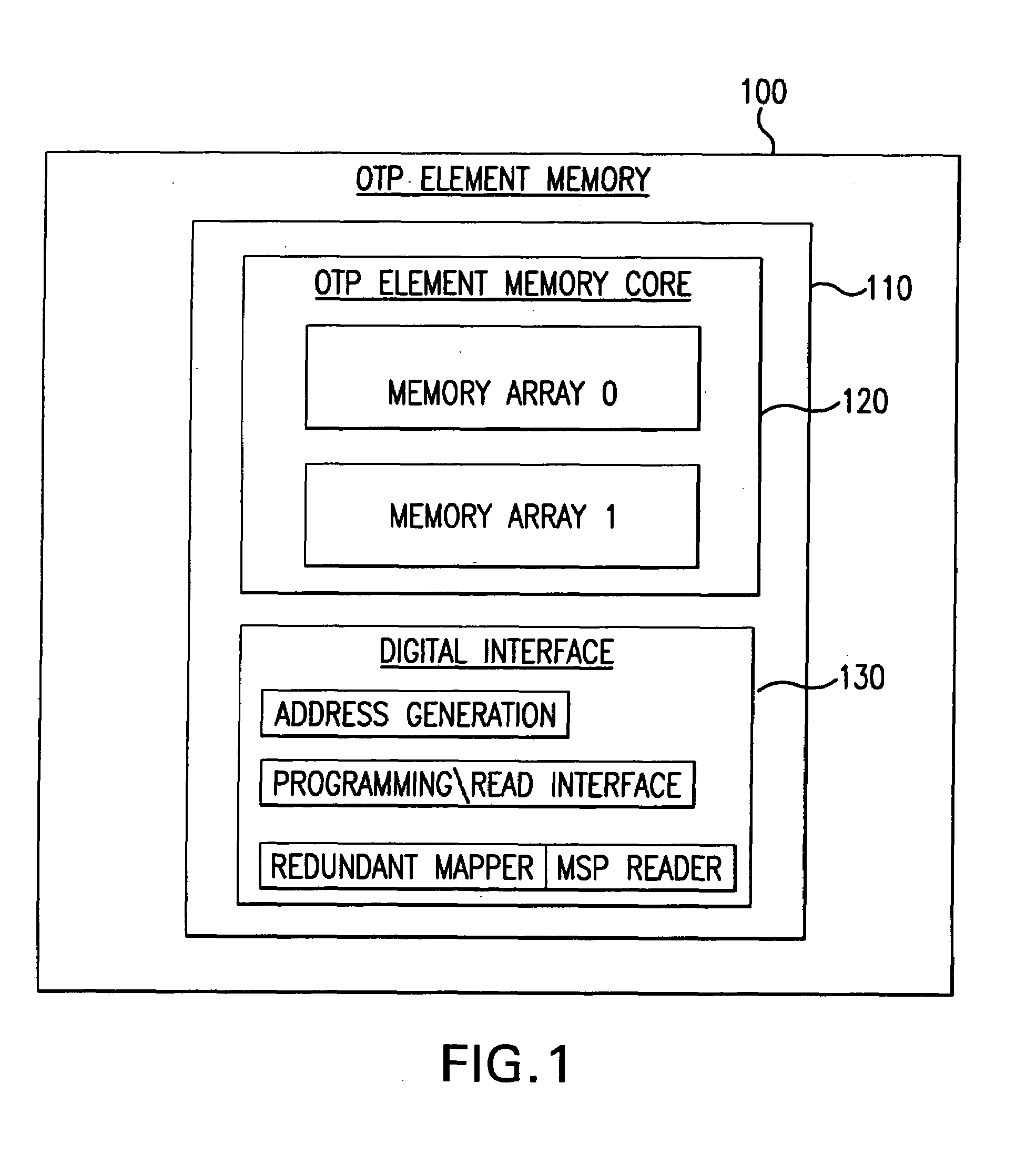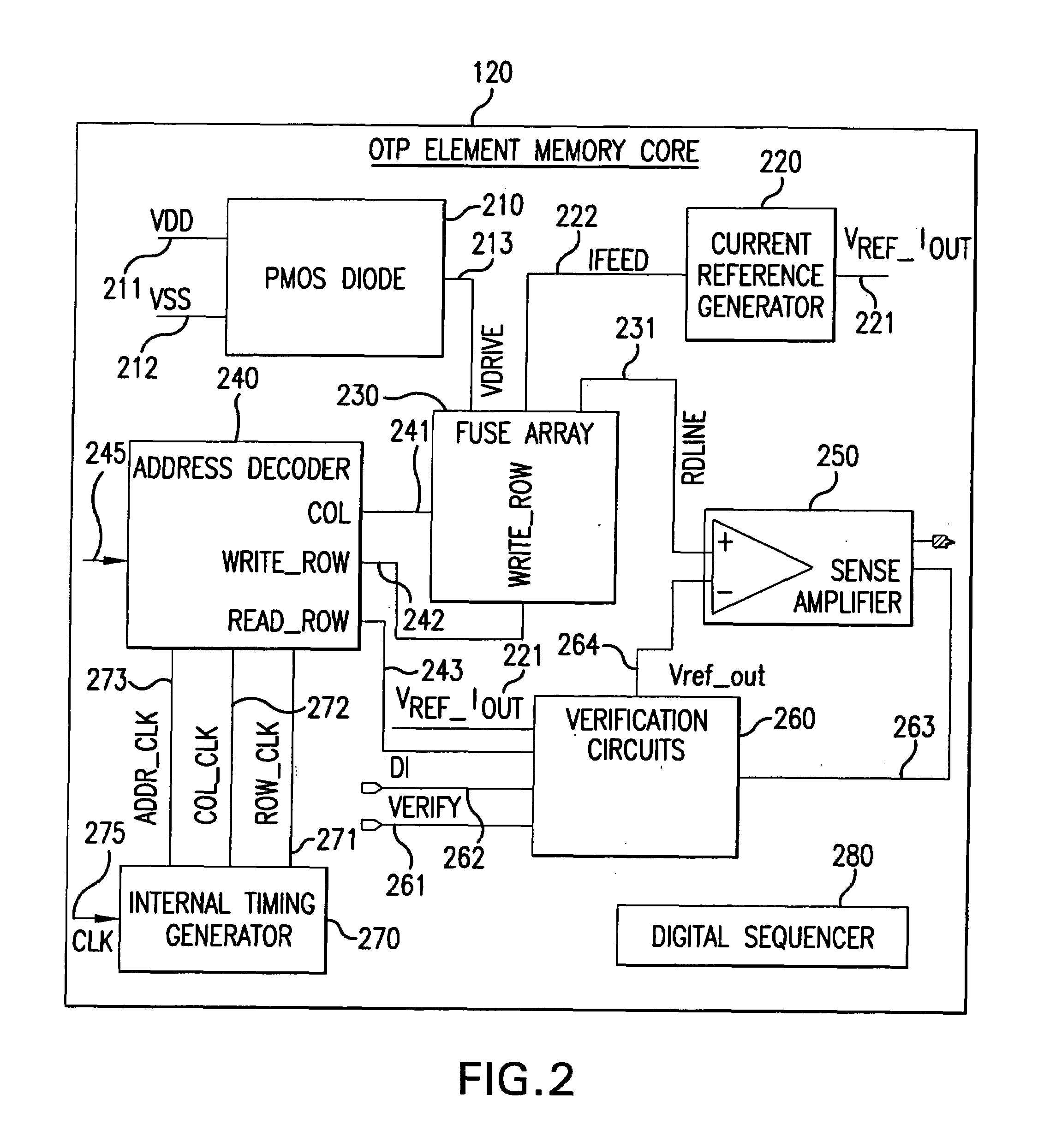System and method for programming a memory cell
a memory cell and programming system technology, applied in the field of semiconductor fuses and systems and methods for programming semiconductor fuses, can solve the problems of programmed fuse contamination, increased complexity and chip size of non-volatile memory manufacturing techniques, etc., and achieves high repeatability and reliability.
- Summary
- Abstract
- Description
- Claims
- Application Information
AI Technical Summary
Benefits of technology
Problems solved by technology
Method used
Image
Examples
Embodiment Construction
Table of Contents
1. Introduction.
2. One-Time Programmable (OTP) Memory Element—System Structure.
[0046]a. OTP Memory Core.
[0047]b. Row-column Matrix Memory Array Scheme.
[0048]c. Address Decoder.
[0049]d. Internal Timing Generator.
[0050]e. Verification Circuit.
[0051]f. PMOS Diode.
3. OTP Memory Element in-System Operation.
[0052]a. Programming Mode.
[0053]b. Reading Mode.
[0054]c. Verification mode.
4. Poly-Si Fuse Design.
5. Conclusion.
[0055]While the present invention is described herein with reference to illustrative embodiments for particular applications, it should be understood that the invention is not limited thereto. Those skilled in the art with access to the teachings provided herein will recognize additional modifications, applications, and embodiments within the scope thereof and additional fields in which the present invention would be of utility.
1. Introduction.
[0056]The present invention relates to semiconductor programmable elements. In particular, the present invention is d...
PUM
 Login to View More
Login to View More Abstract
Description
Claims
Application Information
 Login to View More
Login to View More - R&D
- Intellectual Property
- Life Sciences
- Materials
- Tech Scout
- Unparalleled Data Quality
- Higher Quality Content
- 60% Fewer Hallucinations
Browse by: Latest US Patents, China's latest patents, Technical Efficacy Thesaurus, Application Domain, Technology Topic, Popular Technical Reports.
© 2025 PatSnap. All rights reserved.Legal|Privacy policy|Modern Slavery Act Transparency Statement|Sitemap|About US| Contact US: help@patsnap.com



